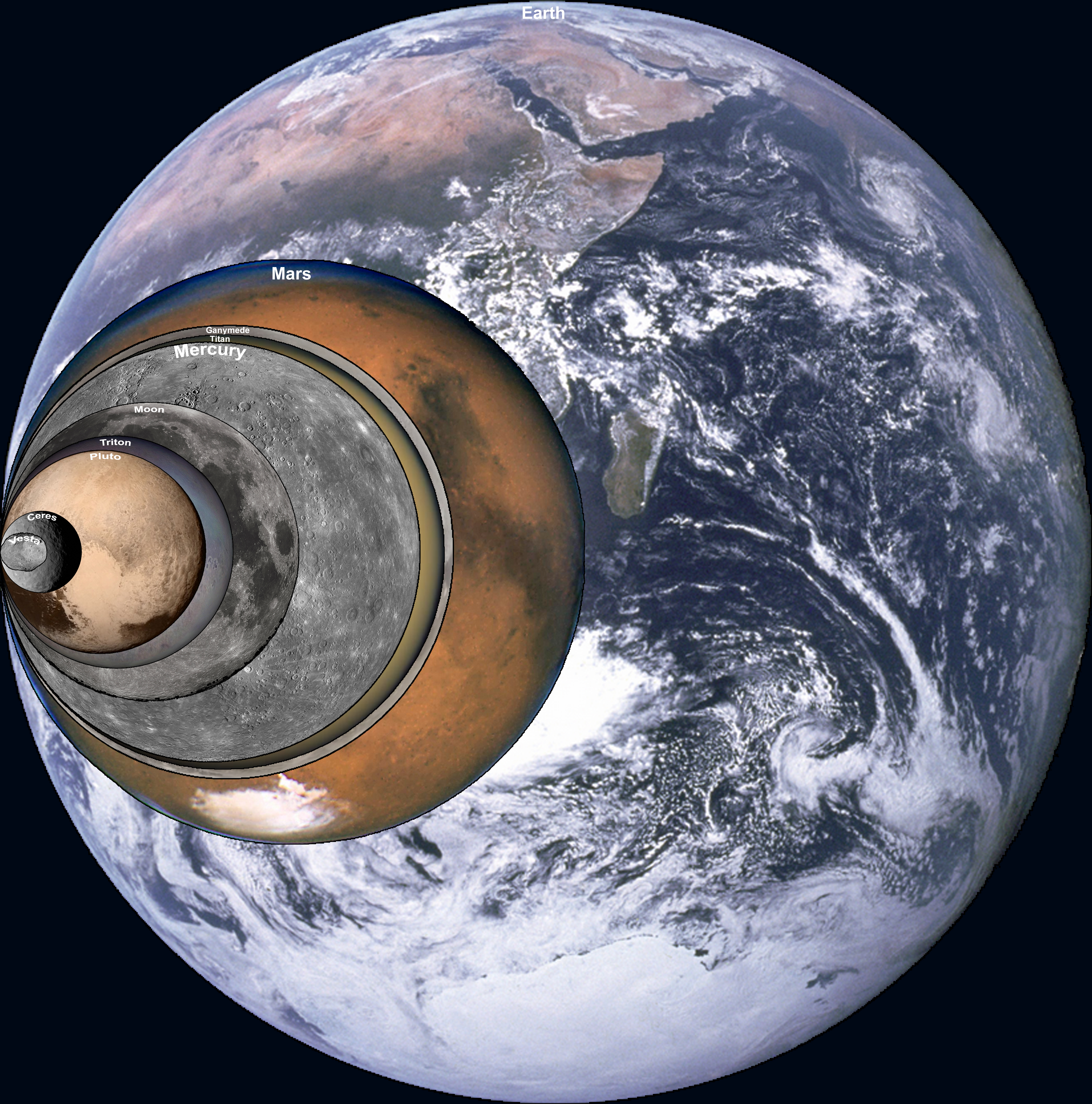Sizes of worlds

It’s a rock-eat-rock world
February 20, 2016
How far does the wind blow stuff?
March 7, 2016
A Piece of the Solar System: This isn’t my usual sort of post. But lately my 6 year old kid has been into planets, and thanks to the many informative videos on YouTube, has been reciting various names and numbers about the many worlds in the Solar System. I decided to show him just how much smaller than the Earth some of those worlds are. Here’s what I made for him. It’s not exhaustive, but it gives a good idea of just how small Pluto is relative to, say, the Moon. The scale is ~2 km/pixel. (Images attributable to NASA or ESA).




7 Comments
Brilliant! I love these scale-graphics.
Interesting fact: Ganymede’s bulk is only 117 km bigger than Titan’s, so Titan with atmosphere actually looks bigger than Ganymed, because it’s haze layer extent some 300 km above surface..
Ah, thanks. I’ll need to go back and fix that then.
Well it’s the never ending debate over which moon in Solar system is the biggest.. It just depends on wheater you include gas. But anywhere is mentioned diameter, it refers to dimensions of solid body without gas. (And in case of gas giants, it’s measured from point where atmospheric pressure is 1 bar.)
Another mind blowing thing is that Mercury, although smaller, is more massive than Ganymede and Titan combined!
Titan is a natural satellite of Saturn and it is made up of ice , so there are ice volcanoes on titan.I know it has solid surface .Reply back soon.
This is awesome. I’m borrowing it for class when we discuss reading graphs and visual information.
Cool, thanks! It also shows one of the reasons why Pluto was reclassified as a dwarf planet – it’s too small to have cleared its orbit of other sun-orbiting worlds. This really shows just how small Pluto is.
It also shows how small Ceres is. By far, it’s the smallest of the dwarf planets. There are other, larger Kuiper Belt Objects that haven’t yet been officially designated as dwarf planets (but I imagine this will be done in the next 5-10 years). I think they included Ceres because they wanted to. I could be wrong – it’s much closer to us and therefore much more easily observable (not to mention there’s a spacecraft there right now), so maybe they took other factors into account.
Brilliant!
I grew up loving astronomy & I’m sure children today do too.